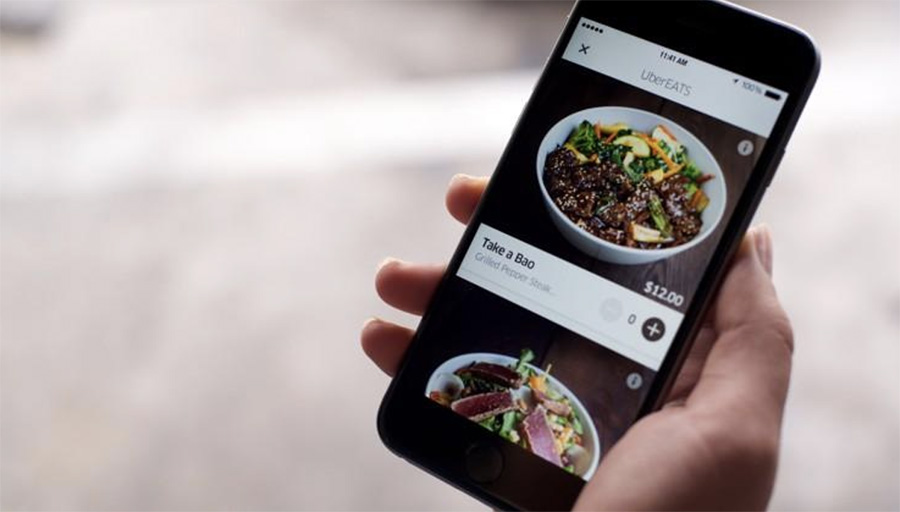Austin loves technology. Austin loves food. Not surprisingly, Austin loves food delivery apps like Favor and UberEats.
But here’s the inconvenient truth: You can’t have your cake – or your Salacho and fried kale fritters – and eat with your iPhone, too.
Convenience has an ineluctable appeal — its own force field and magnetism. Growing up, there was almost nothing I loved more about vacations than room service. There remains something slightly rebellious about eating a meal in your robe and slippers, like playing hooky on normal dining formalities.
But as someone who has spent the last 15 years building a business growing and serving organic and sustainable food, I worry about the hidden costs of convenience.
We are at risk of trading away the slow appreciation of the sights, sounds, smells, touch, and taste that should define the experience of food. We are also about to surrender any direct connection to the people who prepare our food. That empathy counts. It’s simple: When someone is looking you in the eye, you really don’t want him to cry in (or about) his soup.
Restaurants build a customer base on that familiarity with human labor, human flaws, and human kindness. We learn our customers’ quirks and they learn ours. We know that Darcy Robertson likes romesco dressing on her Cobb. We know that Dr. Smith likes his to-go Salacho meat on the side so it doesn’t wilt the romaine. We know this before they tell us, although they always do.
There is a texture and a magic specific to eating houses that cannot be digitalized. A great restaurant is after a feeling — one that roots us and connects us to our memories and our physical beings and one another.
It’s also a pretty rough trade.
Busy, successful restaurants make around a 15 percent profit margin. For instance, if a restaurant signs up to be a partner with services like UberEats, they are charged 30 percent per transaction. That’s outside of the delivery fee charged through to the customer. The eating house loses its profit margin but signs on for the dubious promise of higher sales.
How? These networks don’t make money on delivery, just like Google doesn’t make money being a search engine. They are in the business of mining customer data; delivery is just a hypnotic carrot. They want to hit you with ads when you are hungry.
Great restaurants have always been masters of anticipating customer needs — the dropped napkin, the extra sauce, the quiet table. But we respond to these unfolding desires in the ever-changing present moment, where expectation meets unpredictability. Where people are quixotic, protean, unique; where cowboys crave tofu and yogis feel like chili.
A digital network anticipates, depressingly, what you want based upon what you have done before. There is little room for mystery or discovery and a great reward for predictability. It will be a low-margin, high-volume future of sameness. Restaurants will be pressured to fire staff and compromise on ingredients and hope their customers won’t notice because they will be hit with paid ads when their blood sugar is dipping.
Restaurants are caught in the early stages of the same dynamic that hit postwar American farms. Increasingly, farmers became addicted to the very sources of their profit erosion—synthetic fertilizers, expensive seed, and dangerous chemicals. Industrial farming wreaked havoc in farming communities and compromised soil health, ecological diversity, food quality, and nutrition — and yet it was decades before any widespread dissent took hold.
Wendell Berry was the voice of that resistance long before hipster restaurants — like mine — began printing his words on their staff uniforms. His essay “The Pleasures of Eating” imagines an increasingly passive future industrial eater: “They will grow, deliver, and cook your food for you and (just like your mother) beg you to eat it. That they do not yet offer to insert it, prechewed, into your mouth is only because they have found no profitable way to do so. We may rest assured that they would be glad to find such a way. The ideal industrial consumer would be strapped to a table with a tube running from the food factory directly into his or her stomach.”
It appears “they” have now found a way to make prechewing profitable: Just make it an app.
As consumers, when we choose convenience, we have to accept that we are not choosing momentary ease, but setting a new and enduring normal. We should ask ourselves if we are willing to pony up the old one along with our dollars.


